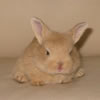
Ok, the bonus question was, do you know why I'm thinking of using each of these in my class?
1. Mustard?
Can be used in food, as a green, and as a treatment for chills and fever, as well as congestion. Familiar to most people at least as a thing. In Britain, mustard and cress (sprouts) is a known quantity.
2. Camomile
If you have been alive in the US, you probably remember that Camomile is a sedative. You may even know what it smells like. You may remember that it smells the sweeter for being trodden on (shakespeare). The essential oil has a cool blue color. It's also used for stomachaches and fevers.
3. Rosemary
Beautiful strong DISTINCTIVE smell, it's my favorite-- and it has wonderful associations: remembrance, loyalty, fidelity. Good for weddings and funerals; but it's also a cleanser, so if you've got dread diseases running around in your fic, this is a good one to choose. Supposed to be good for the brain. Legend sez it only grows well where the mistress is 'master' of the house. Good for chasing away nightmares, making rubifacents for muscle aches. I should write a fic myself about this line from Banckes: 'Make thee a box of the wood of rosemary and smell to it and it shall preserve thy youth.'
4. Lavender? Or should that be Roses
Lavender is a sedative and good for headaches in those who aren't allergic to it. The scent of lavender means clean to the back of our brains, because it's so associated with soap.
Roses are good for EVERYTHING, at least to the medieval mind. You can make cordials and jams and tinctures... and of course there's the association with love. You can also make garlands, they have lots of symbolism iwth the thorns, too, and they are all over the mythology of the middle ages.
5. Rue
This is a tough one, but it was used in cooking, and it has a distinct scent and appearance-- though it's primary purpose was as a fumigant and... well, Oil of Rue (distilled essential) as well as Oil of Savin and Oil of Pennyroyal are the traditional abortifacents of the 18th and 19th c. Touching rue, however, gives some people a rash. I feel a detective story coming on.
6. Comfrey
Looks like lambs-ear on steroids, so it's easy to describe; grows beautifully wild; and encourages cell growth like mad. Not so good for the liver, esp. taken internally-- but the leaves are big enough to make material to pad/splint a broken limb. And once you touch the stuff, you won't forget it.
7. Sage
Associated with both wisdom and money. Tends to discourage lactation. used, of course, in foods (esp. sausage). Distinctive smell. Good for coughs, colds, sore throats. Medieval authorities argued bitterly over whether it is good or bad for pregnancy; we now avoid the artemisas instead and consider sage relatively safe. Sage ale was a nice tonic.
8. Plantain
You can find plantain leaves anywhere, and they make a great poultice for a skin injury. They have lots of symbolism with the flat leaves and the upsticking seeds. Seeds are laxative. Both seeds and leaves are edible.
9. Fat Hen/Pigweed or Nettles?
Edible. Ugly. Good tonics. Nettles are more distinctive and also more philosophically freighted with the stings. Also, Nettles can be processed like flax to make a linen. The Romans allegedly rubbed themselves with stinging nettle to combat the cold. Nettle apparently also discourages bleeding, and can be used in a beer. Nettle-juice is a vegetable rennet.
10. Coriander
VERY good for gas. Especially used as a comfit-- offering comfits could fit in a place where older writers would have one character offer the other cigarettes. Good for indigestion, makes a nice exotic taste/smell in food. Coriander seeds look like rolled up rollybugs.
I'm tempted to put Mugwort in there too.
Mugwort is supposed to help travellers, being put in the shoes; it's also supposed to encourage prophetic dreams, being slept on, drunk as a tea, or burnt. Another old beer herb. Also supposed to be a nervine, sedative, and good against epileptic fits, though it's an artemesia and has the same failings.